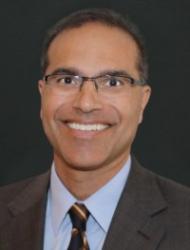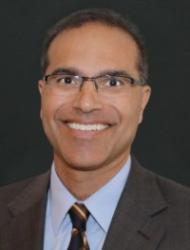 At the recent annual meeting of the Radiological Society of North America in Chicago, I was fortunate to have a conversation with a consumer. He was Dr. Stephen M. Bravo, medical director of Sand Lake Imaging in Orlando, Florida.
At the recent annual meeting of the Radiological Society of North America in Chicago, I was fortunate to have a conversation with a consumer. He was Dr. Stephen M. Bravo, medical director of Sand Lake Imaging in Orlando, Florida.
 At the recent annual meeting of the Radiological Society of North America in Chicago, I was fortunate to have a conversation with a consumer. He was Dr. Stephen M. Bravo, medical director of Sand Lake Imaging in Orlando, Florida. Sand Lake is a busy operation, with two offices seeing 400 patients per day, performing 70 to 80 MRIs on two scanners, 50 to 60 CTs on two scanners, 100 mammograms, 100 ultrasounds and 50 to 80 biopsies per week. Bravo has more than 500 referring physicians in his database. In short, there’s a lot going on.
At the recent annual meeting of the Radiological Society of North America in Chicago, I was fortunate to have a conversation with a consumer. He was Dr. Stephen M. Bravo, medical director of Sand Lake Imaging in Orlando, Florida. Sand Lake is a busy operation, with two offices seeing 400 patients per day, performing 70 to 80 MRIs on two scanners, 50 to 60 CTs on two scanners, 100 mammograms, 100 ultrasounds and 50 to 80 biopsies per week. Bravo has more than 500 referring physicians in his database. In short, there’s a lot going on.
Bravo switched to Siemens’ syngo.via software platform about a year ago. Why? “We invested in technology that would help us read images and increase throughput,” said the energetic, articulate Bravo. “Now we needed something to take the technology, make it into a report system efficiently that allowed our doctors to get the results rapidly, with increased acceptance of the results — meaning that we had more quantifiable, reproducible, scientifically objective data — and allow them to visualize that data in a virtual real-time situation and convey all that data in a way that was most clinically applicable and easily used in a clinical fashion,” he explained.
So he went looking for software that was user friendly, exceedingly efficient and fast. “The systems we had been using required technologists to spend 45, 60 up to 90 minutes at a time to reconstruct these images,” said Bravo. “What this meant in a real life situation is that we couldn’t do any processing until the patients were off the table because we didn’t have the time. And the processing would get shunted off to the next day, or the next day, and that adversely affected our turnaround time and impacted our ability to provide information to our referring doctors in an efficient manner.”
It was like having a great group of musicians without a score to show off their talents. Bravo needed a skilled conductor. “The key was gaining increased acceptance of our results,” he said. With syngo.via the acceptance rate by the physicians “skyrocketed.” Before, the system was far too dependent on the skill of the technologists to reconstruct the images in the way the radiologists needed.
“We became far more efficient,” said Bravo. “It used to take our technologists about an hour to process a coronary CTA. It now takes them about 10 minutes.” Reconstruction of an image can often take place while the patient is still on the table. The ability to get information to the radiologist is now virtually real time.
In his opinion, the return on investment for syngo.via is “greater than any other system.” Bravo said he’s excited by the new General Engine software package, which was unveiled at RSNA 2013 and is pending FDA approval. To the new harmony at Sand Lake, he could only say, “Bravo.”
Disclaimer: Mr. Goldstein is paid by Siemens Healthcare for his reporting on RSNA.






